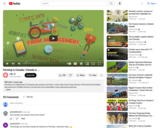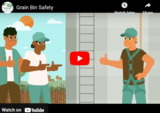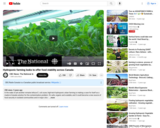
This video is a tutorial describing how to evaluate sources for reliability.
- Subject:
- Agriculture Studies
- Material Type:
- Open Access Asset
- Author:
- Western University
- Date Added:
- 12/22/2023

This collection houses assets (or resources) from Saskatchewan Distance Learning Centre's Agriculture Production (Field Crop) B10 course.

This video is a tutorial describing how to evaluate sources for reliability.

FarmBeats, a new agriculture research project developed by Microsoft, uses solar-powered white space-based Internet connectivity to record soil temperature and moisture levels and track them with cloud-based computing models. FarmBeats enables data-driven farming in remote areas by using inexpensive monitoring equipment, including cameras, to help increase the food yield of farms.

This video goes into detail about what actions should be taken in the event of a chemical spill. It talks about the steps as well as what to include in a chemical spill kit.

This is a short video about the importance of being aware of the risks and hazards in agriculture.

This video outlines what should be done in the event of a chemical spill. It includes the actions that should be taken and in which order. Each action is explained in further detail.

Farming is an integral part of Canada’s past, present, and future. In this video, Evan Fraser, director of the Arell Food Institute, discusses how Canada’s farmers can become more sustainable in their agricultural practices.

The Food 2050 Series is a collection of videos from The Rockefeller Foundation about regenerative agriculture and food sustainability across the globe. A specific Saskatchewan example that connects to Indigenous agricultural practices is included.

GM stands for genetically modified. So, GM crops are plants grown for food whose genes have been altered using genetic engineering. In some cases, the genes of other organisms have been inserted into the genome of the crop plant to improve it in some way. As the human population increases, there is a higher demand for food, and it is often difficult to grow enough food to provide everyone with a balanced diet. Growing GM crops is a partial solution to this problem because GM crops tend to have higher yields than conventional crops.
This video explains GM crops and outlines the pros and cons of production.

When you think of fresh produce and fields of grain, the Arctic may not spring to mind. But just 800 miles from the North Pole, the Global Seed Vault holds emergency stockpiles of most of the world's crops. It provides scientists with the tools they need to breed plants able to cope with a changing world.
This video explores the Global Seed Vault and its uses, especially with the threat of climate change for crops.

This video goes over important details for being safe when working in or around grain bins.

This video shows an example of urban agriculture in Montreal using greenhouses on the roof of a building. This shows a great example of how agriculture and food production can take many forms.

Due to the region’s extreme climate, the Yellowknife Co-op relied on imported produce from the South. This video shows the use of Growcer units to allow isolated communities to produce fresh produce year-round.

This video demonstrates how cauliflower is harvested. This video was taken in Watsonville, California, and follows the harvesting, washing, and packing of cauliflower in the field. This video was used to demonstrate specialty farming and equipment needs.

This video focuses on the functions and features of a John Deere air seeder. It was used to show field crop equipment advances.

How does climate change affect agriculture? A changing climate makes growing conditions more difficult. This video by Syngenta talks specifically about how soil impacts agriculture and how soil improvements will be key to agriculture with climate change.

High-tech hydroponic urban farming is making a case for itself as a made-in-Canada solution for food stability. It's safe, organic, and scalable, and it could become a new source of food security in isolated communities and major cities.
This video from CBC News looks at how hydroponic farming is being used.

Jack.org is a Canadian charity committed to providing mental health supports and resources. The website includes opportunities for guest speakers (both virtual and in-person) and a wide range of resources, including specific Indigenous mental health resources. There are also several resource hubs designed for youth. This website can be used to support curriculums that include mental health topics.

This video demonstrates the steps needed to conduct a soil texture analysis. This is a simple way for students to conduct a soil sample using a glass jar, water, and dishsoap.

Journey 2050 is an online farming simulation that teaches students about food sustainability across the globe. The program challenges students to consider how we will feed an ever-growing population that is projected to reach 10 billion by 2050. Using an inquiry-based approach, this gamified, virtual program encourages students to make decisions and adjust them as they see their impact on society, the environment, and the economy at a local and global scale. Singing up as an educator gives you access to the teacher guides and resources. You can choose how you would like to use this based on the number of hours you are willing to give.

WorkSafe Saskatchewan is a great resource to access general information about Worker's Rights in Saskatchewan. There are several graphics and videos available to use with students explain each right.